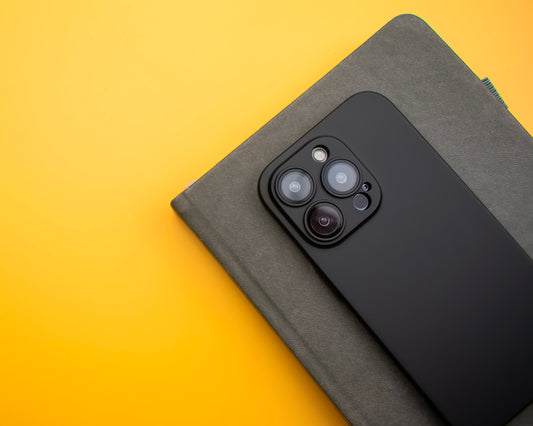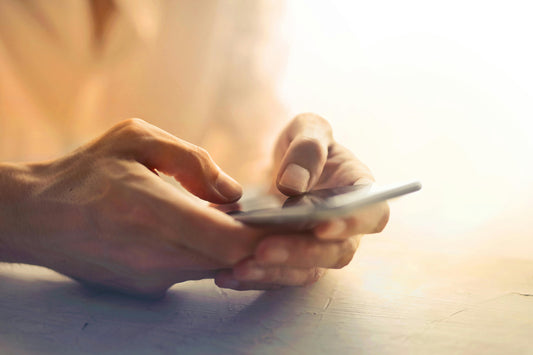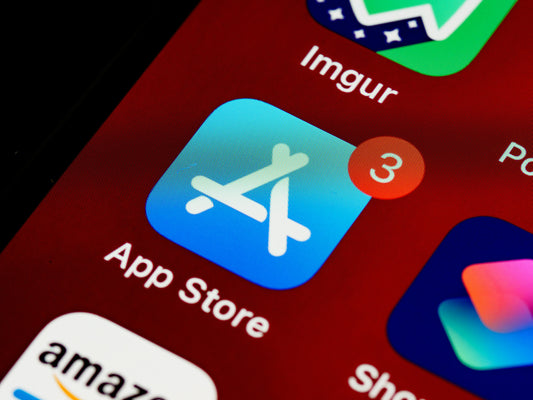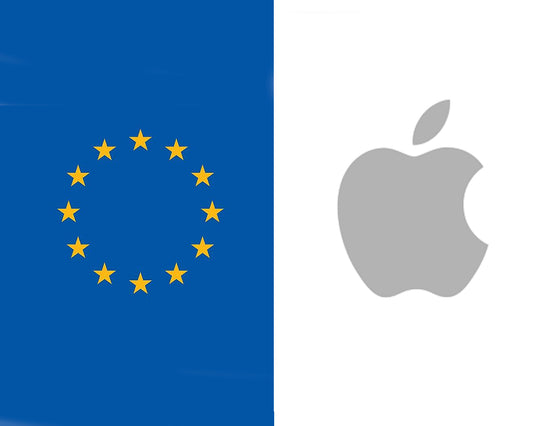Need a new iPhone and Android? Consider these things first.
Share
In the past, choosing a phone was a straightforward decision between a couple of options. However, today there are numerous high-quality Android and iPhone models available, making the selection process much more challenging. As a consumer, you must consider various factors before committing to a brand since each top-of-the-line product may have its own unique features. For instance, the phone with the best battery life may not necessarily have the best camera. In this article, we will delve into each key factor you should research before purchasing your new phone.
Know your most important features
One of the primary factors to consider when selecting a phone is your specific needs. Do you require an all-day battery life, or are you searching for a device with the best camera quality? Perhaps you prioritise high-quality video recording or the best screen resolution. Alternatively, you may be after a phone that provides an excellent gaming experience. It is crucial to keep in mind that each device has its own unique features and specialities. For instance, the iPhone 14 Pro has one of the best screens available and exceptional cameras that are only surpassed by the Google Pixel.
Dont ignore midrange devices
The popularity of midrange mobile phones has surged in response to the sharp rise in flagship prices. When the top-of-the-line iPhone crossed the mid-1000s threshold, many consumers began to question whether the cost was truly worth it. Midrange devices typically incorporate some of the latest features but mostly employ older technology from the previous year's flagship models, packaged in a new design and boasting excellent battery life. These devices can often offer unbeatable value and should undoubtedly be taken into consideration before making a final decision.
Wait for sales if you can
If you have the luxury of time and your current phone is still functional, it's highly recommended that you wait for any upcoming retail events. These sales occur frequently, from New Year's sales to Black Friday, and provide an excellent opportunity to save a considerable amount on the latest Android phones such as the Samsung Galaxy S23 or Google Pixel 7, as well as the iPhone 14 models.
Shop used for a great deal
If you cannot wait and need a phone urgently, consider browsing through eBay for used options at a discounted price. This is a simple way to purchase a phone in almost-new condition while saving a significant amount. Alternatively, you could opt for a used previous-generation version, which can be up to 50% cheaper and offers similar performance to the latest models. For instance, the iPhone 13 Pro and 14 Pro are remarkably alike, but you could easily save £300 by purchasing a used version. Moreover, with more people using phone cases and screen protectors, you are unlikely to receive a device in poor condition.
Check the phone out in store
If you're considering a phone from a brand that you've never used before, it's advisable to visit a store and check them out in person. For example, if you're new to the iPhone style, you may find the straight edges of the iPhone 14 uncomfortable to hold. The last thing you want is to be stuck with a phone that you find uncomfortable to use.

Consider previous investments
When deciding on a new phone, it's essential to consider which ecosystem you are already invested in. For instance, if you use a MacBook, an iPad, or AirPods regularly, it would make sense to shop for Apple's latest iPhone. This would simplify your life since Apple products tend to work together seamlessly. On the other hand, if you have more app purchases on the Google Play Store, it may be worth sticking with Android to avoid repurchasing apps.
![]()
Get some protection
Once you’ve decided which device you want make sure you wrap it in a protective case and screen protector to ensure it does not damage or break because these devices are pretty expensive and you should try to make them last as long as possible - especially considering these devices have the power to keep up with newer generation phones, just have a look at the Apple iPhone benchmarks over the years and you’ll see how small the gap between generations has gotten.
If you need protection for your iPhone then check out the SKNS THIN or SKNS SILICONE cases we have, these add style and protection without breaking the bank!
High-end vs Budget
When shopping for a new mobile phone, you'll come across a wide range of prices, from affordable £300 Android devices and mid-range iPhone 14 to very expensive flagship models like the iPhone 14 Pro Max or Samsung Galaxy S23 Ultra, which cost over £1100. Regardless of whether it's a flagship or a more affordable "flagship killer," each type of phone has its own benefits.
Flagship devices are typically packed with the latest technology and the best hardware available, such as the biggest battery, best screens, highest quality camera, and latest software. These devices are designed to be as fast as current hardware allows and can last for years if properly maintained. If you do purchase one of these devices, be sure to check out our SKNS SILICONE case to keep it safe!
The mid-range devices are the most competitive area in the smartphone market, and every manufacturer offers devices in this range since not everyone is willing to spend over £1000 on a single device. Budget and mid-range devices usually cost between £200-£600 and offer almost every headline feature from devices released the previous year. Although the hardware may not be as good as their higher-end counterparts, these devices are still excellent and can save you a considerable amount of money.

What screen size are you looking for?
Once you have decided on your budget, the next consideration is the size of the phone you need. Generally, phones have been growing in size over the last 4-5 years. The standard iPhone 14, which has a screen size of just over 6.1 inches, would have been considered large a few years ago, but it's now considered the market standard. In comparison, the gigantic iPhone 14 Pro Max or Samsung Galaxy S23 Ultra, each with 6.8-inch screens, make the iPhone 14 feel tiny.
It's crucial to consider your usage when choosing the phone size. A large phone can be challenging to use and requires a larger battery due to the bigger screen. It also weighs more and can be increasingly uncomfortable to use for extended periods. However, the larger size provides a bigger screen, which is great for consuming media, better speakers, slightly better performance, and, in some devices, additional cameras.
On the other hand, a smaller device has the benefit of being lightweight, easier to use with one hand, more efficient with its battery usage, and generally simpler to live with. It also doesn't hang out of your pockets when you're out and about.

Cameras for avid photographers
If you prioritise good quality photos, considering a flagship phone may be your best choice. Manufacturers have been pushing for more megapixels, a larger variety of lenses, and software that enhances each picture you take without you even realizing it. However, that doesn't mean you should disregard budget devices entirely, as they often come packed with tech that is only one or two years old and more than capable of taking great photos.
If taking high-quality images is a top priority for you, sticking with a flagship device is probably the best option. The camera quality will remain comparable to any new devices that are released in the following years. However, be sure to check for photography reviews of the device you are interested in and ensure that the phone has all the added features, such as optical zoom, night mode, and optical image stabilization.
Battery life
Most smartphones can last a full day of normal use on a single charge. However, larger phones with bigger screens and more powerful processors tend to drain the battery faster. It's rare to find a phone that can last more than a day with normal use. Here are some factors to consider:
Make sure you charge your phone overnight. Most modern phones, such as the iPhone, include trickle charging, designed to keep the battery perfectly conditioned.
Fast charging is a feature that is lacking in budget phones but is prevalent in mid-range to flagship devices. This feature allows you to rapidly charge your phone up to 80% usually in under 30 minutes, which is very convenient. Make sure your new device has this feature.
Your phone's battery will drain faster depending on the type of tasks you perform, such as gaming or video streaming. To limit the impact, be sure to lower the brightness and consider changing the resolution - a feature available on only certain devices.
Processor power
High-end smartphones come with powerful processors and 12GB or more of RAM, ensuring smooth performance for any task. However, you don't need to spend a lot on flagship devices to experience excellent performance as the gap in CPU performance between the latest flagship devices and the previous generation has been slowly shrinking.
Most mid-tier phones provide sufficient power to cater to your daily needs. You can play almost any game from the Google Play store and edit high-resolution images using apps like Snapseed. Most midrange phones can handle a wide range of tasks with ease.
As you explore more budget-friendly options, you may notice a decline in performance, particularly with gaming. Graphics-intensive 3D games could stutter or even crash unexpectedly. Nevertheless, basic tasks like sending emails, streaming on Spotify, and browsing Instagram should remain trouble-free.
Consider how much storage you will need
Every device available now starts with 32GB of storage, this may be enough for a user who has little interest in photography, videos or gaming, but one large game or 4k video may be enough to take up all this space.
Premium smartphones, especially those capable of recording top-notch 4K videos, provide storage capacities of 256GB or more. With such ample space, you'll rarely worry about deleting old files to free up room.
If the phone accommodates microSD cards, storage concerns become even less significant. Nowadays, you can easily acquire 32GB or larger microSD cards at a low cost, significantly expanding your phone's storage capacity. However, it's worth noting that expandable storage is an increasingly uncommon feature in modern smartphones.
Other added features to consider:
- Wireless Charging: This was once a premium feature only available on the latest flagships a few years back but is now pretty much a standard feature even found on budget devices, be sure to check
- Water Resistance: A feature available in most mid to high-end phones, this is normally an IP67 rating or higher which keeps the device safe from water, sweat and spilt drinks, it’s a great safety feature to have.
- Biometric unlock: This is another feature that once was restricted to the flagship models, now every range of iPhone includes the excellent Face ID and almost every Android device has either a physical fingerprint scanner





